Caldwell 103
Better known as the Tarantula Nebula or 30 Doradus, Caldwell 103 the brightest star-forming region in our galaxy.
Distance
170,000 light-years
Apparent Magnitude
4.0
constellation
Dorado
object type
Nebula
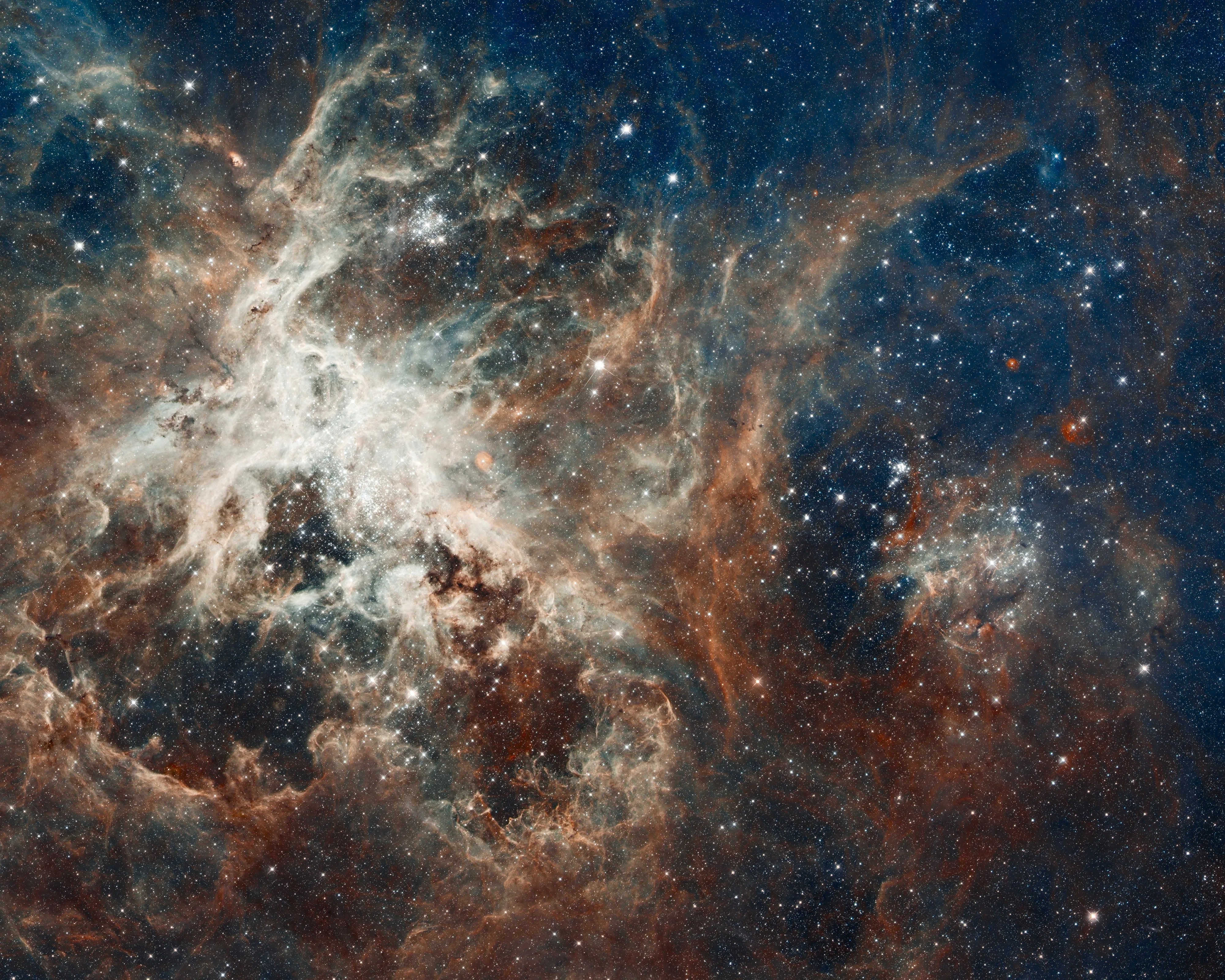
Caldwell 103 is a treasure of the southern night sky. Also cataloged as NGC 2070 and often called the Tarantula Nebula or 30 Doradus, this chimerical structure is nestled in the Large Magellanic Cloud, a dwarf galaxy that orbits the Milky Way. This Hubble image has caught the star-forming factory mid-frenzy, as it churns out stars at a furious pace. Individual members range from small, embryonic stars still shrouded in thick cocoons of gas and dust, to stellar behemoths doomed to live fast and die young in ferocious supernova explosions.
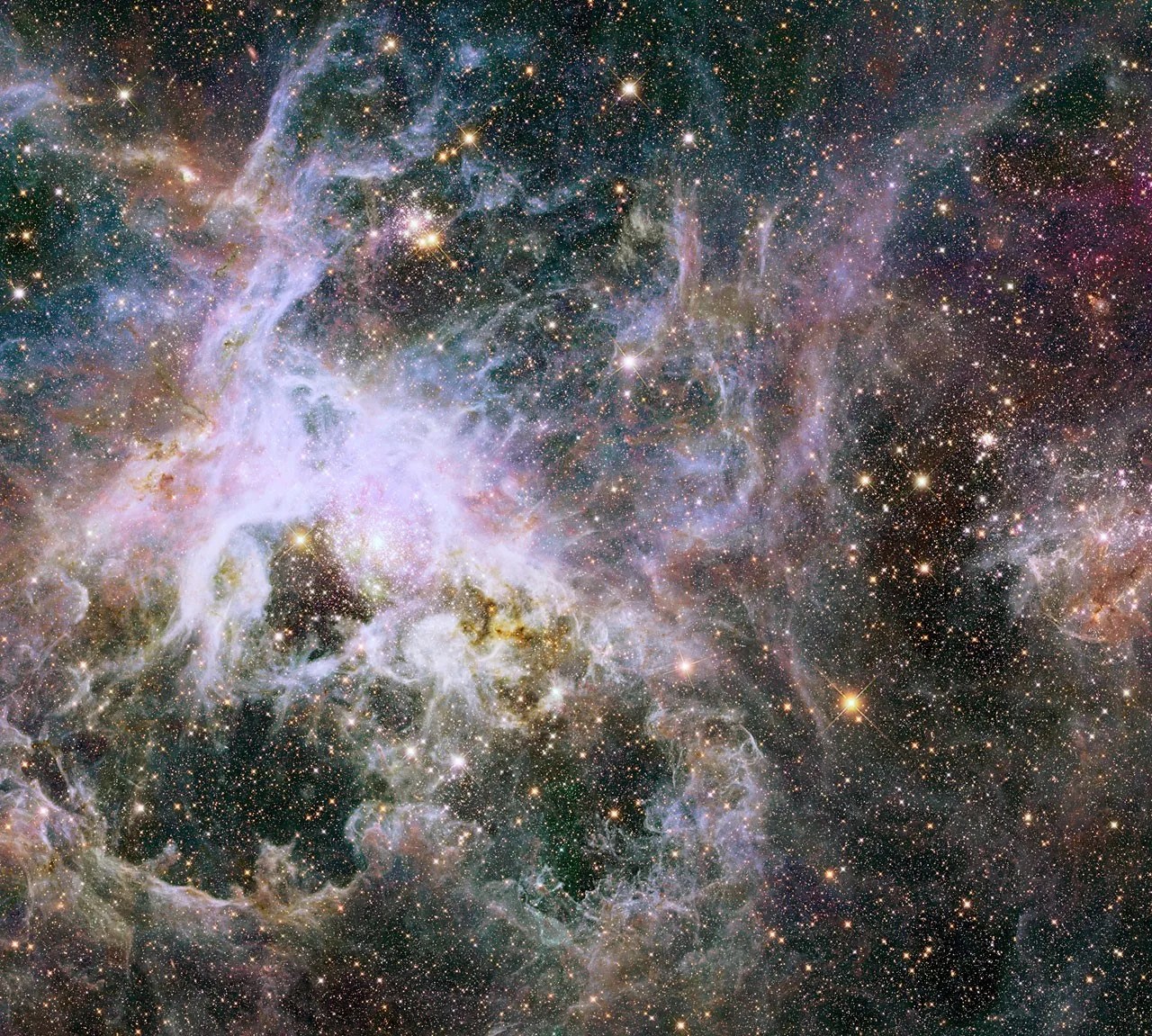
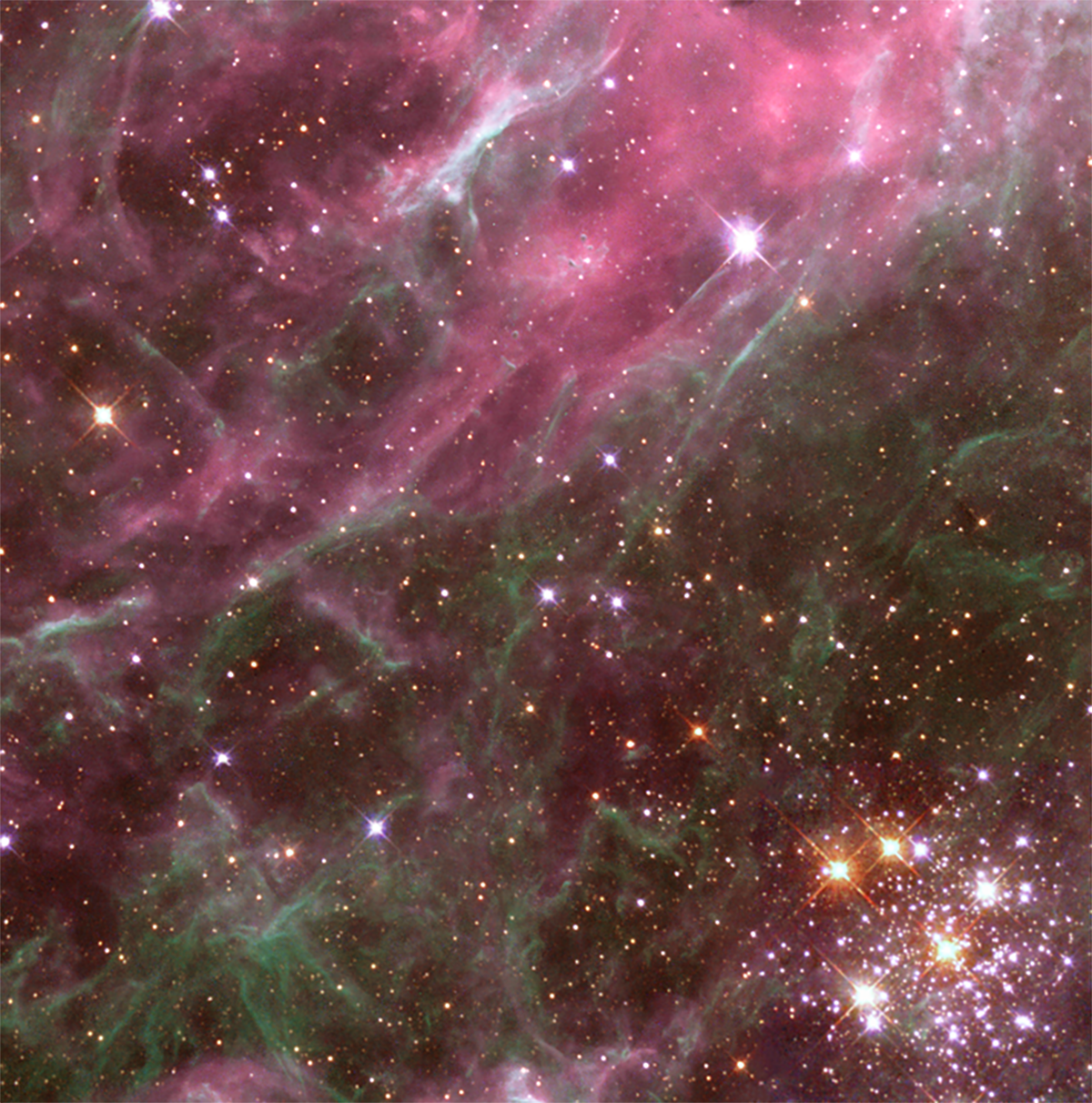
In the Tarantula Nebula, the massive stars are carving deep cavities in the surrounding material by unleashing a torrent of ultraviolet light, which is winnowing away at the enveloping hydrogen gas cloud in which the stars were born. Besides sculpting the gaseous terrain, the brilliant stars may be triggering a new generation of offspring. When the ultraviolet radiation hits dense walls of gas, it creates shocks, which may generate a new wave of star birth. In fact, scientists believe that a shock wave from a nearby supernova may have caused the cloud of gas and dust that the Sun formed within to collapse, leading to the creation of our solar system. If correct, that means we owe our lives to the violent death of a massive neighboring star.
This 2011 image is one of the largest mosaics ever assembled from Hubble exposures and includes observations taken by Hubble’s Wide Field Camera 3 and Advanced Camera for Surveys. The colors trace different elements in the hot gas that dominates the image, with red signifying hydrogen and blue representing oxygen.
The Tarantula Nebula was first recorded by astronomer Nicolas-Louis de Lacaille in 1751. Though it is located a staggering 170,000 light-years away, the Tarantula Nebula has a magnitude of 4, making it visible to the unaided eye and a spectacular target for binoculars. Through medium and large telescopes, the nebula's spider-like structure becomes apparent. To get the best view of the Tarantula, visit a dark-sky site in the Southern Hemisphere around the beginning of the year and look for it within the bounds of the Large Magellanic Cloud, located in the constellation Dorado.
For more information about Hubble’s observations of Caldwell 103, see:
Hubble’s 22nd Anniversary Image Shows Turbulent Star-Making Region
Unraveling the Web of a Cosmic Creepy-Crawly
Multiple Generations of Stars in the Tarantula Nebula
Hubble's Bubbles in the Tarantula Nebula
Hubble Unveils Monster Stars
Turquoise-Tinted Plumes in the Large Magellanic Cloud
Close Encounter with the Tarantula
Arachnophobes Beware: Hubble Snaps Close-Up of the Tarantula
Hubble Catches Heavyweight Runaway Star Speeding from 30 Doradus
Symphony of Colors in the Tarantula
Hubble Captures a Grand View of the Birth of ‘Hefty’ Stars
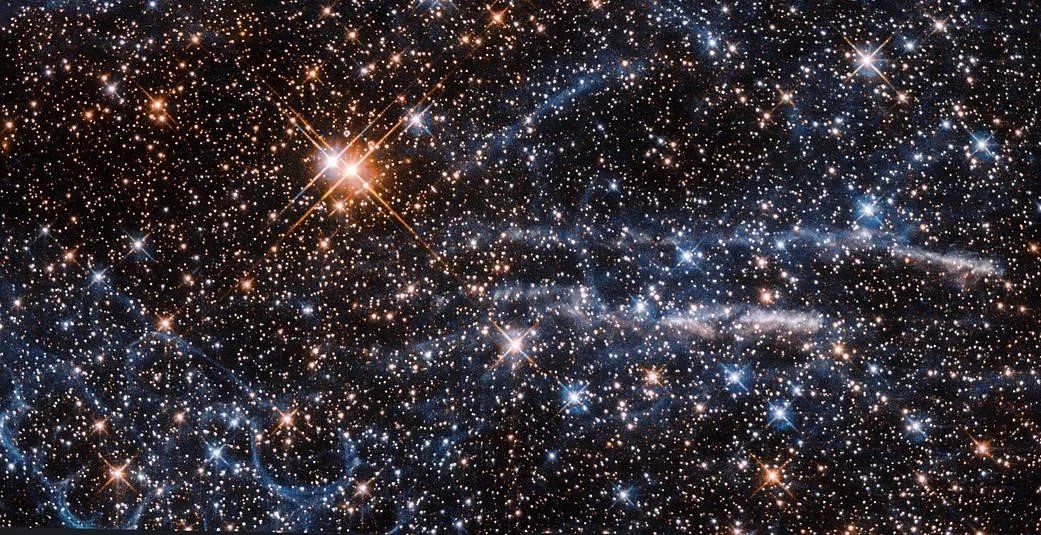
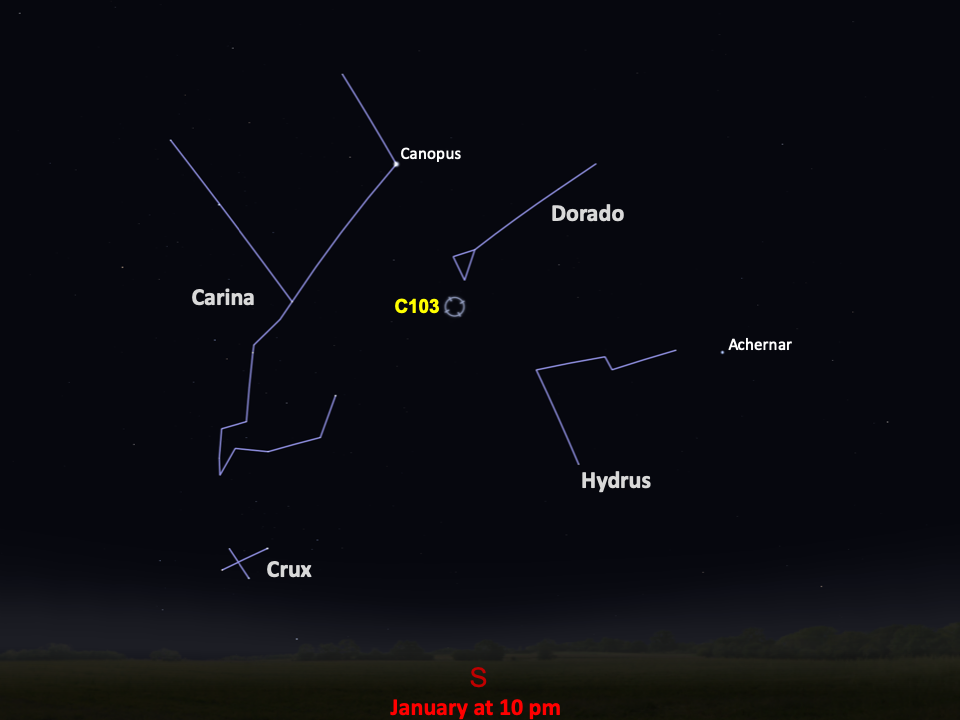
Glossary
Dwarf Galaxy - A small, faint galaxy with only millions to a few billion stars.
Magnitude - The brightness of an astronomical object, represented by a number; bright objects have low numbers on the magnitude scale, while dim objects have high numbers.
Nebula - An interstellar cloud of dust and gas; either a location where new stars are being forged or a cloud of material ejected into space by a dying star.
Supernova - The explosion of a massive star at the end its life, which ejects material into space and causes the star to temporarily brighten in our sky.
Explore Hubble's Caldwell Catalog
The following pages contain some of Hubble’s best images of Caldwell objects.

Caldwell 1
Also known as NGC 188, this group of stars formed from a large cloud of gas making the stars roughly…

Caldwell 2
This shell of gas is expanding outward, away from the dying star within.

Caldwell 3
This barred spiral galaxy was first spotted by British astronomer William Herschel in April 1793 in the constellation Draco.




